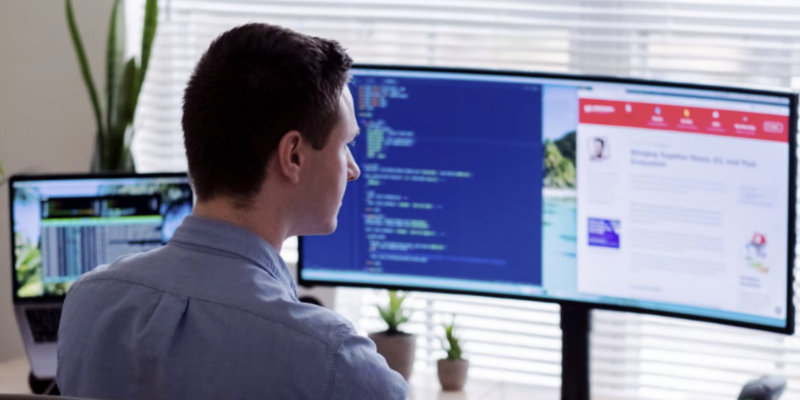ProRail: working throughout the chain to create a sustainable working environment

If you think of ProRail, you probably think of railway lines, overhead wires and signals. Yet, human facility management is currently a circular flagship within the organisation. Consequently, the department has high ambitions – fully econeutral operations by 2027. With 4,500 workstations at 40 locations across the Netherlands, a fully sustainable office design not only has considerable impact, but should also serve as a source of inspiration for staff and visitors.
A sustainable overall concept
When the current furniture contracts expired, it seemed like the perfect time for ProRail to take a closer look at its overall working environment. Stephanie Steffers, Senior tender manager in procurement explains, ‘Sustainability is firmly embedded in the Verbindt Verbetert Verduurzaamt strategy. We want a working environment that lives and breathes this concept, that inspires and prompts people both inside and outside the organisation. We soon realised that this goes beyond refurbishing chairs or purchasing circular desks. It is much more about a sustainable overall concept, but we had no idea whether that kind of wide-ranging demand had any support in the market. We had to work that out first.’
Formulating an ambition and focusing in on the requirements played an important role in the project. This was then translated into three pillars that together form the point of departure:
- Identity and enjoyment: the working environment must be inspiring, attractive and exude the ProRail DNA in its aesthetics
- Functionality: a working environment that works, not just ergonomically but also in keeping with the culture of interactive collaboration
- Sustainability: the use of products, materials and raw materials that are permanently usable and retain their value
Stephanie explains, ‘Doing this allowed us to map our priorities. It would not be particularly sustainable to replace the entirety of our interior when it wasn’t yet necessary. Then there was COVID-19, which obviously had an impact on the scope of the assignment.
We are now moving towards hybrid working and more home-working, so there are fewer workstations that we need to refurbish. We started by looking at what was still usable, what might need to be refurbished and what could be reused externally. The final step was sourcing new products that had to be fully circular. It’s a long-term process, which makes the tender much more abstract than suppliers tend to be familiar with.’
The whole chain around the table
Where circular manufacturers and suppliers are normally asked for a specific, detailed solution or receive a request for a specific product, ProRail is now putting the entire office design package out to the market. Stephanie explains, ‘We’re looking for a collaboration partner who can take care of entire concept. This requires collaboration within the chain, which is something new. To discover whether the market was ready for this, we organised a market consultation. In it, we discussed current trends and developments in detail, how the procurement process works and, of course, whether parties thought our ambition was feasible.
Thankfully, the response was overwhelmingly positive and most parties indicated that our ambition and the scope of the assignment were not too complex. It really was a dialogue where all parties learned a lot from one another. One thing that did become clear was that our integral request was somewhat unusual – it requires a very different approach and new collaboration between large and small parties.’
Tendering the new way
After completing the market consultation, the tender was published in September. ‘We have this firm ambition as we hope to excite and inspire the market to consider a new way of working. Despite the thorough approach with our dedicated project team in the ramp-up, we’re going to have to wait and see how things ultimately play out in practice. We hope to be surprised, to see special forms of collaboration and receive great submissions!’


